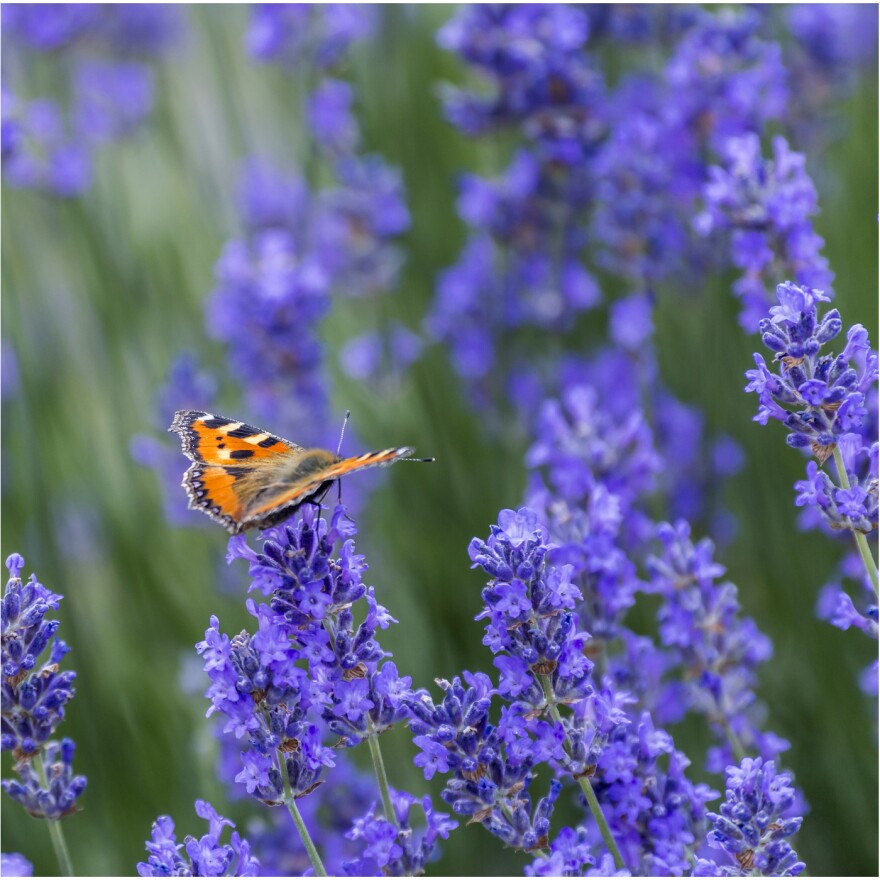Field Note on California Tortoiseshell Butterflies
By Dawn Gelderloos
It’s time for Field Notes, brought to you by the Montana Natural History Center.
On a late afternoon walk down to the banks of Ninemile Creek, northwest of Missoula, our dogs were quick to run to the water to wade and cool off. As they splashed into the creek, a cloud of orange rose from the water’s edge and swirled above us. It took a moment to make sense of it all. It was too soon for swirls of cascading autumn leaves, and the formation of this sudden dispatch had a certain energy to it. This orange blast of color moved with purpose.
I watched as the orange specks took shape. A colorful chorus of California tortoiseshell butterflies had descended on the banks of the creek. Some were perched on rocks still warm from the day’s sun, and others moved slowly through the soil and sand at the water’s edge.
In addition to their vibrant color, what surprised me on this autumn day were their numbers. Dozens and dozens of delicate orange wings seemed to hover and swarm together. I would learn later that this butterfly is known for its mass migrations. And in years when their population soars, their swarms can span for miles upon miles. A vast hue of orange weaving across the sky.
The California tortoiseshell (Nymphalis californica) sports bright-orange wings with black spots and a black border with ragged edges. The underside of the wings is a muted brown and resembles a dried leaf, the perfect camouflage when it sits on branches or stems.
Their range extends from western Canada to Baja California and east to Montana. These colorful swarms can be found in forest clearings, woodlands, and even in foothill canyons.
The California tortoiseshell is also known for its long lifespan, with some adults living up to 10 months. They spend much of their lives, however, in hibernation or estivation—a period of inactivity that allows these insects to survive periods of extreme heat and drought.
They are some of the first butterflies we will see in late winter and early spring. These winged adults emerge, often in late February or early March, to lay their eggs on the tender leaves of their preferred host plant, wild lilac. The eggs then hatch into black caterpillars with white spots that feed and grow before emerging into adult butterflies. Here in Montana, a new generation emerges in late July and August. Soon after their arrival, however, they will complete a short summer hibernation, when the days are long and hot, and appear once again in late summer and fall. As our days begin to cool, they will head into their winter hibernation and begin to fly again once the weather warms in March or April.
Unlike other beach-bound butterflies, the California tortoiseshell does not migrate long distances to a warmer climate for the winter. In Montana, they move to lower elevations or find protected areas to hibernate in the colder months, staying local rather than making a long-distance journey.
How do they stay protected from freezing temperatures? It turns out they have their own protective antifreeze, glycerol, a natural chemical that prevents ice crystals from forming inside their small bodies and protects them from freezing temperatures.
While their life cycle appears to be tied directly to wild lilacs in the caterpillar stage, these orange wonders eat plant vegetation and even mud in their butterfly form. It turns out they also like concrete surfaces for the heat the pavement absorbs, and for the minerals and salts they seek for hydration.
This explosion of color among dried autumn grasses is a reminder that nature offers up its beauty, in surprising moments, all year. And this part of nature’s tapestry takes to the fields and sky in a glorious orange hue.
I’m Dawn Gelderloos for Field Notes, brought to you by the Montana Natural History Center, providing natural history education for schools and the public throughout Montana. For information about upcoming events and programs at the Center, call 406.327.0405, or visit our website at MontanaNaturalist.org.





